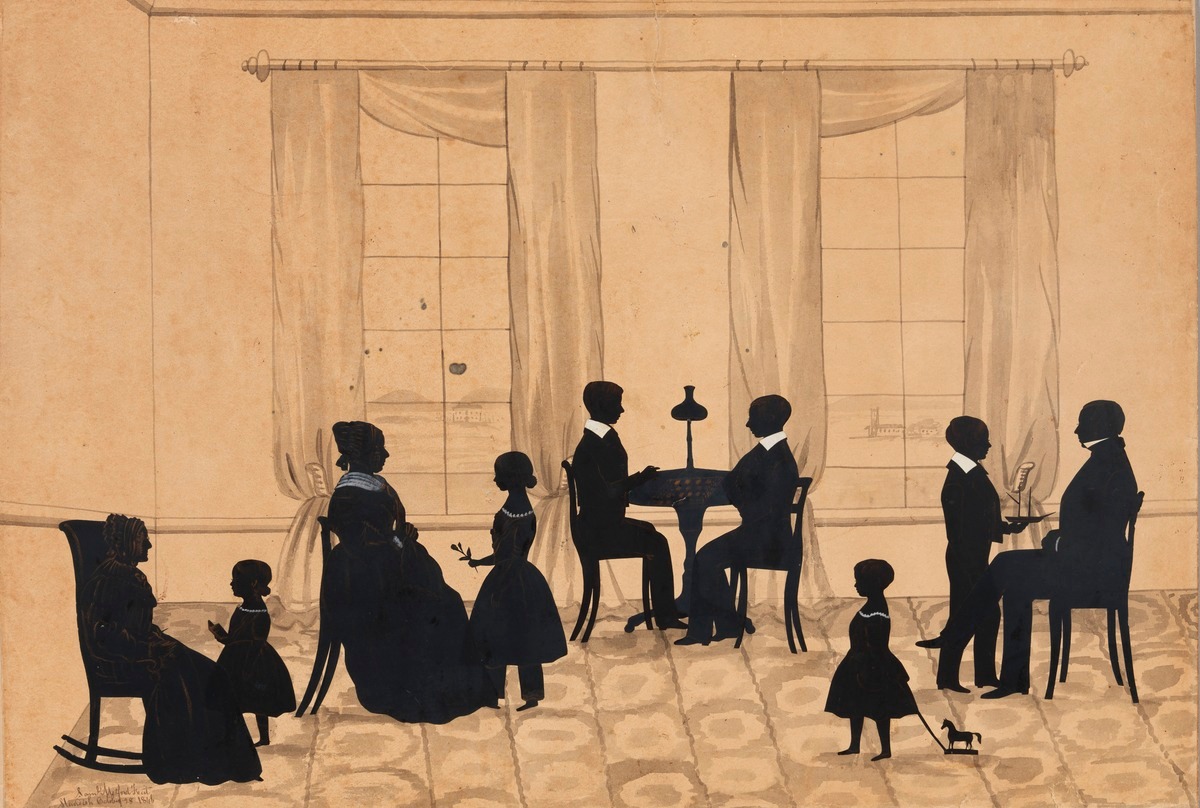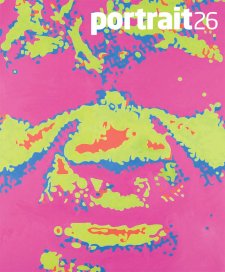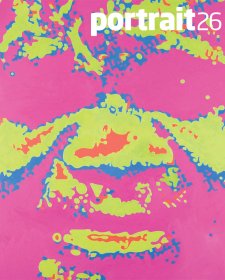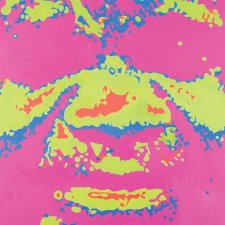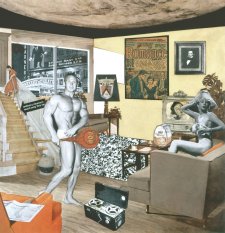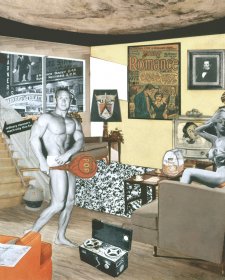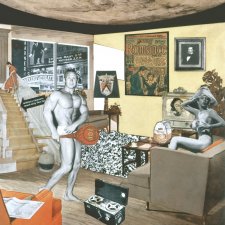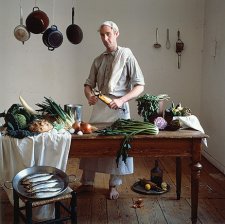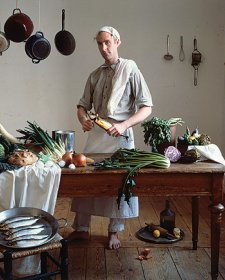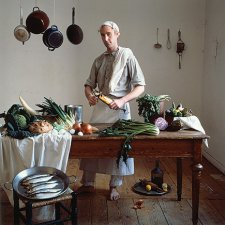The silhouette depicts the family of Francis MacKenzie, who appear to have settled in Australia some time before 1874.
It is said to depict the MacKenzie family at their ancestral home, Adlington Hall, Standish, Lancashire, but the family’s connection with the Hall is, as yet, untraced. Similarly, although all the figures in the silhouette are identified, their spheres of activity in the colony have yet to be fully described.
The MacKenzie family is said to have lived at Adlington Hall until Francis MacKenzie (seated, far right) died in 1851. Francis’s widow Maria (nee Edwards, seated, third from left) left her mother, Mrs Thomas Edwards (nee Lister, in the rocking chair, far left) and came to New South Wales with four or five of her children after Francis’s death, some time in the 1850s. Some years later, she was to die at Wallerawang, near Lithgow, where the family had acquired property. Thomas MacKenzie and his brother Walter (seated, right, at the table) are thought to have become clergymen. John MacKenzie (seated, left, at the table) was Examiner of Coalfields in the Illawarra district from 1863 to 1865, and Examiner of Coalfields more broadly from 1872. It seems that John MacKenzie’s job focused the family’s interest on the Wollongong, Newcastle, Hunter Valley, Maitland and Dapto districts; various family members bought land in the Hunter Valley and Dapto areas. Maria MacKenzie (the tiny girl second from left) married a Dr A Morson and evolved into the family matriarch, dying at the family property Heriot Hill near Dapto in 1917. Her spinster sister, Caroline (approaching her mother, fourth from left), also lived and died at Dapto. Kenneth MacKenzie (second from right) died in 1903 and is buried in St Michael’s Cathedral in Wollongong. The next generation of the family expanded to Sutton Forest, Bathurst, Newtown, Darling Point and Adelaide. Amongst them was Maria Morson’s son, Charles, whose daughter Nancy Wiseman bequeathed the silhouette to the National Portrait Gallery earlier this year.
Samuel Metford was born in Glastonbury, into a Quaker family. In England he came to specialise in full-length silhouette likenesses, cut from black paper and embellished with gold and white paint. According to John Woodiwiss’s standard text on British silhouettes, Metford made ‘some very fine family groups – Father and Mother surrounded by their children and pets, with hand-painted backgrounds of imposing rooms whose tall windows looked out on wide landscapes, or a seascape with a tall-funnelled steamship in a prominent position.’ Metford moved to America in about 1834, and spent some ten years there, working mostly in Connecticut but also in New York and South Carolina. He returned to England in the early 1840s, and lived there for the rest of his life, although he revisited America a couple of times in the 1860s.
As a representation of individuals whose contribution to the colony is largely undetermined, the MacKenzie family silhouette, strictly speaking, falls outside the scope of the collection. However, as a Colonial-era portrait, in an interesting medium, by an artist whose productions are increasingly coveted by collectors, it constitutes a welcome gift. The Board of Directors agreed that the work forms an appealing addition to the National Portrait Gallery’s collection of early nineteenth-century portraits and will add substantial interest to education programs focusing on the Colonial period and forms of historical portraiture.
A surviving distant relative of the MacKenzie family describes them as ‘solid middle class snobs’ – respectable people who succeeded in establishing themselves comfortably in the colony without making a profound or distinct historical impact. In her view, the primary interest of the silhouette lies in the fact that ‘all the family was there together in one room in Lancashire, and many of them ended up scattered so far away’. In this sense, although its sitters may remain relatively obscure, the work itself stands as a stark and shadowy signifier of Colonial dispersal, enterprise and adaptation.
